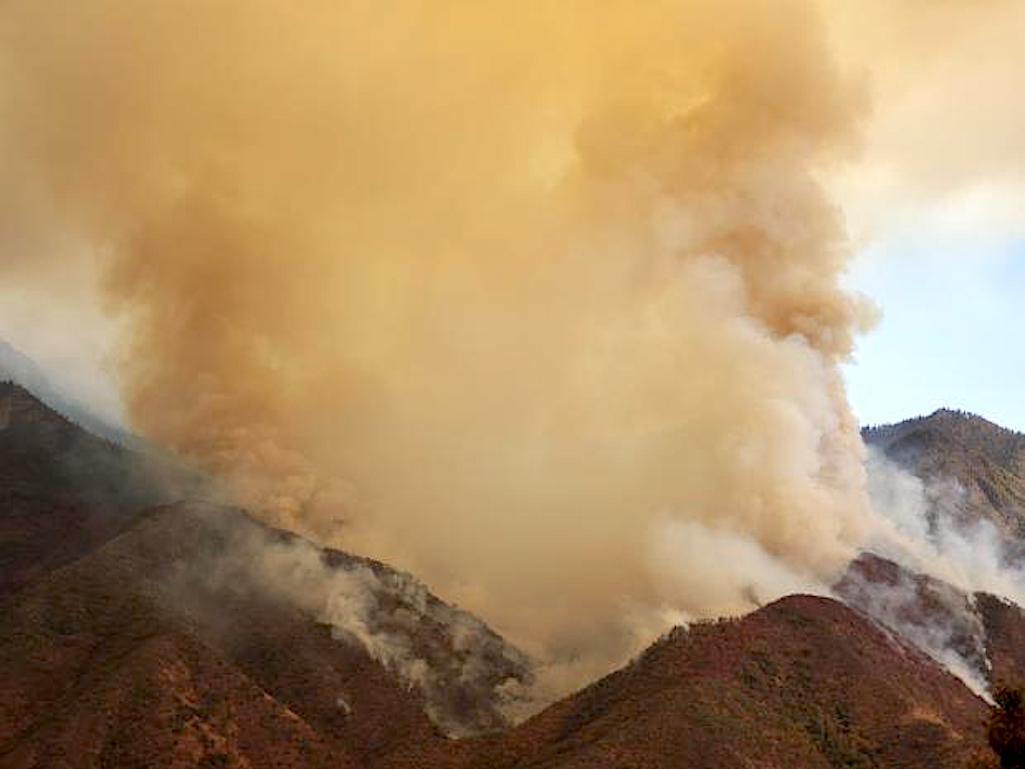
The smoke plume from the Paradise Fire at Sequoia National Park, captured Sept 11/NPS
More closures were coming to Sequoia National Park on Sunday as two wildfires were rapidly growing in size as they burned across a steep and rugged landscape on the west side of the park.
The "KNP Complex" was comprised of the Colony Fire, located in the Yucca Drainage near Crystal Cave Road, and the Paradise Fire, located south of the middle fork of the Kaweah River. These fires were growing and have potential to affect park infrastructure and resources, a park release said.
The fires, sparked by lightning from a storm Thursday night, were located in steep, densely-forested terrain. The Paradise Fire so far has been inaccessible from the ground, and air resources have been very active with water and retardant drops to slow its spread. Still, the fire that measured approximately 32 acres on Saturday covered more than 800 acres on Sunday with no containment in place.
Ground crews have had some success in accessing the Colony Fire, but the area is heavily affected by tree mortality, and standing dead trees were a major safety concern. Air resources have been extremely active on this fire as well. That fire, which was estimated to cover 72 acres on Saturday, covered more than 200 acres on Sunday, also with no containment in place.
Because of the fires, the Lodgepole Campground, Wuksachi Lodge, and the Giant Forest/Lodgepole area were all to close at 7 p.m. Sunday. There would be no access to the General Sherman Tree for the duration of this closure.
The Quail Flat gate was to be locked at 7 p.m., and the road between Sequoia and Kings Canyon national parks was to be closed. All visitors are expected to leave via Highway 180.



Comments
Worth noting that there's been extensive prescribed fire (aka "good fire") in that area since the late 60s and, especially in the Giant Sequoia Goves. It'll be interesting to see the effect if this wildfire gets that far. A lot of evidence to show that, depending on wind, humidity etc., it might just become less intense and allow it to be stopped more easily (less ground & "ladder" fuels, thinner tree density) This is what appears to have happened on the Caldor fire at South Lake Tahoe. The fire hit treated areas (mostly mechanical learing and thinning) and flame lengths went from ~150 feet to ~50 ft. allowing firefighters to keep it out of the community. No structures were lost there.
It's critical that fire be restored to the landscape once again. Indigenous peoples did it for thousands of years in some areas. Burning and thinning won't stop a fire but it will reduce intensity when fire reaches those areas allowing it to be stopped.